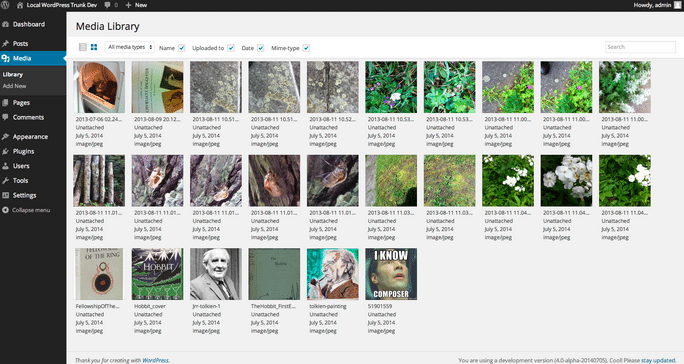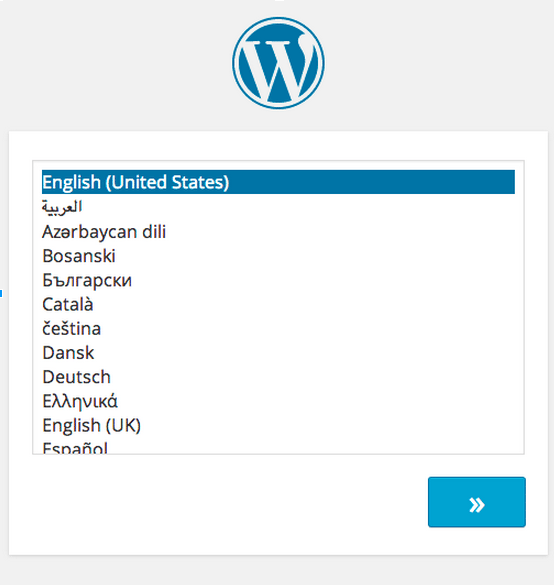The launch date for WordPress 4.0 is still over a month away, but its exciting new features are starting to take shape. The major changes in 4.0 are improvements for embedded media, internationalization, and improving the user experience for plugin installs and the media library. With a target release date of August 27, 2014, there is still plenty of time to get ahead of the changes—to ensure that your site and any plugins or themes you’ve developed are compatible—and even contribute to its development.
Keep in mind that until 4.0 is actually released, anything can change, but now is a good time to get acquainted with the new features. Testing the new features prior to the release ensures there will be no surprises come release day. If you find any bugs, you can report them, and possibly even fix them and become a core contributor.
Improved Internationalization
As WordPress grows, more and more of that growth is amongst non-english speakers. In an effort to serve those users better, improvements are being made to the way WordPress handles translations.
Language changes will no longer require editing any code, which will open the doors to even more users. This could could lead to the overall expansion of the WordPress user base.
Perhaps the biggest change in 4.0 is a new first step in the WordPress installer that allows you to set the primary language. Additionally, language will now be an option in general settings.
When language is set by either of these options, the necessary translation files will be automatically downloaded and placed in the appropriate directories.
For more information about these changes and to learn how to contribute, see this make post and follow the i18n component in core trac.
Plugin Installers and Management
While the theme installer and management screens have been totally revamped over the course of the last two releases, the plugin installer and manage screens have remained unchanged. WordPress 4.0 aims to make the process of finding, installing, and managing plugins easier and more intuitive.
There are many new enhancements planned, though as of now not all of the work has been completed. The main ticket for improvements to the plugin installers call for improved plugin detail listings—including more information, review revisions, and contributors, as well as better filtering of installed plugins, and a new option to see which plugins have been recently updated.
That last enhancement—the ability to see recently updated plugins—could be invaluable for troubleshooting plugin conflicts. Speaking of testing, the plugin installer now has a “beta” option that lists plugins that are being used to develop new features for WordPress, making it even easier to test upcoming features.
If you’d like to help improve plugin management, you should watch the plugins component in core trac. Similarly, you can read this make post for links to issues that are a part of the project.
Media Manager
Another important part of the WordPress admin that is getting a revamp is the media manager. The media manager will have a new “grid view,” which was designed to make it easier and faster to browse and select media.

Beyond placing media types in an easy-to-manage grid, the media manager now makes it easier than ever to filter and search files. You can now filter by media type, and hide or show file name and other meta info. You can also switch to the traditional view.
To learn more about the media manager improvements and to get involved, see this make post or follow the media component in trac.
New oEmbed Providers
One of the coolest features of the WordPress post editor is its ability to embed media by pasting a URL on its own line. It’s one of those things that is so deceptively simple that I often have trouble explaining it to people.
In order for an oEmbed to work in the post editor or via other oEmbed functions, the provider must be whitelisted in core.
WordPress 4.0 adds several new options for embedding media from, including:
- TED Talks
- Mixcloud
- CollegeHumor.com
- Issuu
- Polldaddy’s short URL format
- YouTube playlist URLs
Don’t Forget to Beta Test
If you haven’t beta tested a version of WordPress under development before, it is really easy to do. You can update any existing install using the WordPress beta tester plugin. You can also check out the latest changes via version control using Git or Subversion. Don’t forget if you find a bug to create a new ticket and if possible, submit a patch.
If you’ve already tested WordPress 4.0 beta, what’s your favorite new feature? Even if you haven’t yet, what new feature are you looking forward to? Let us know in the comments!



3 Comments